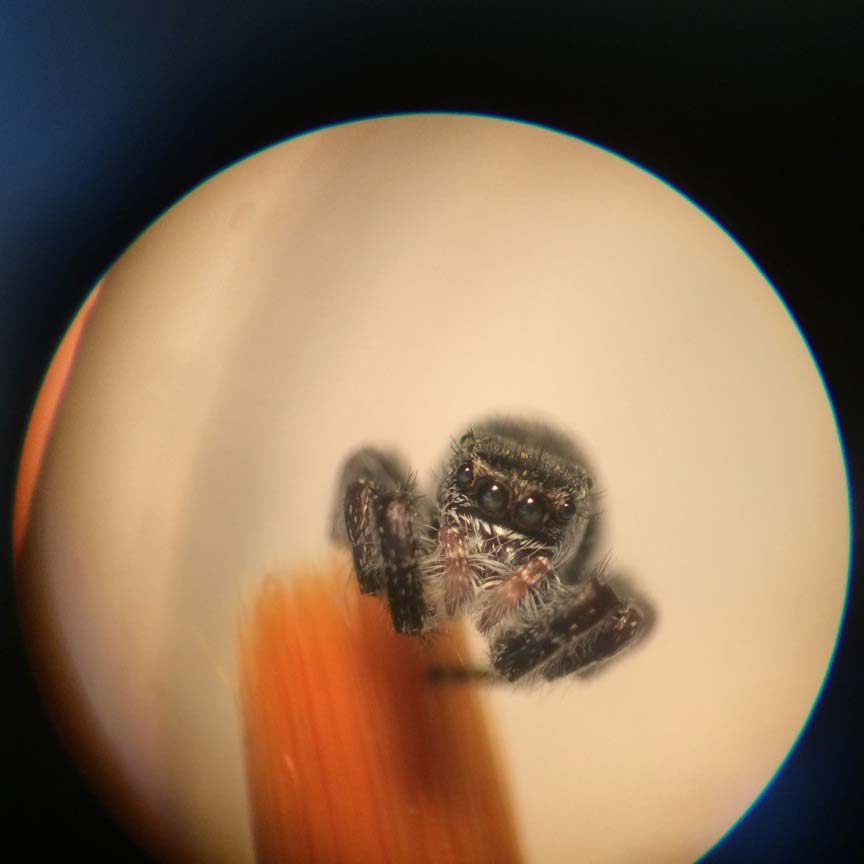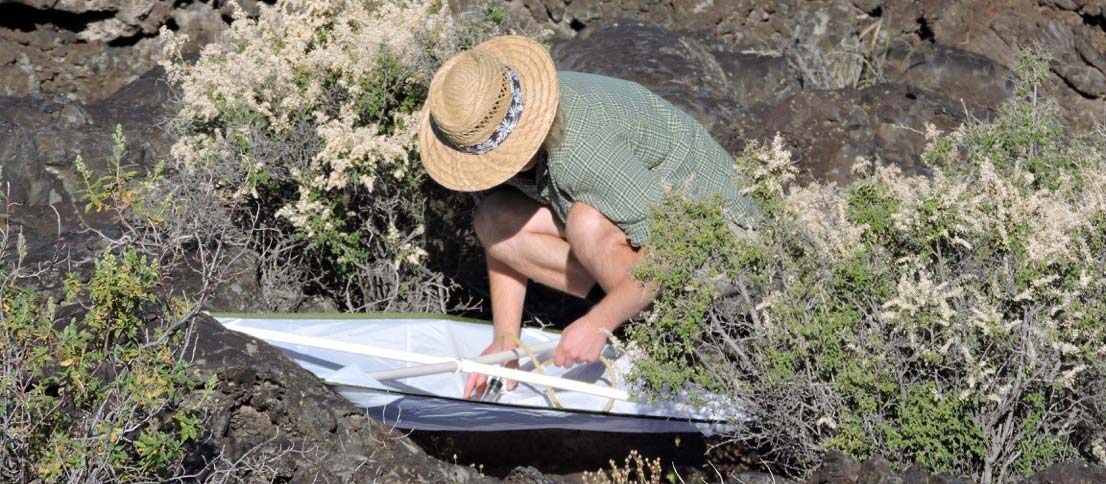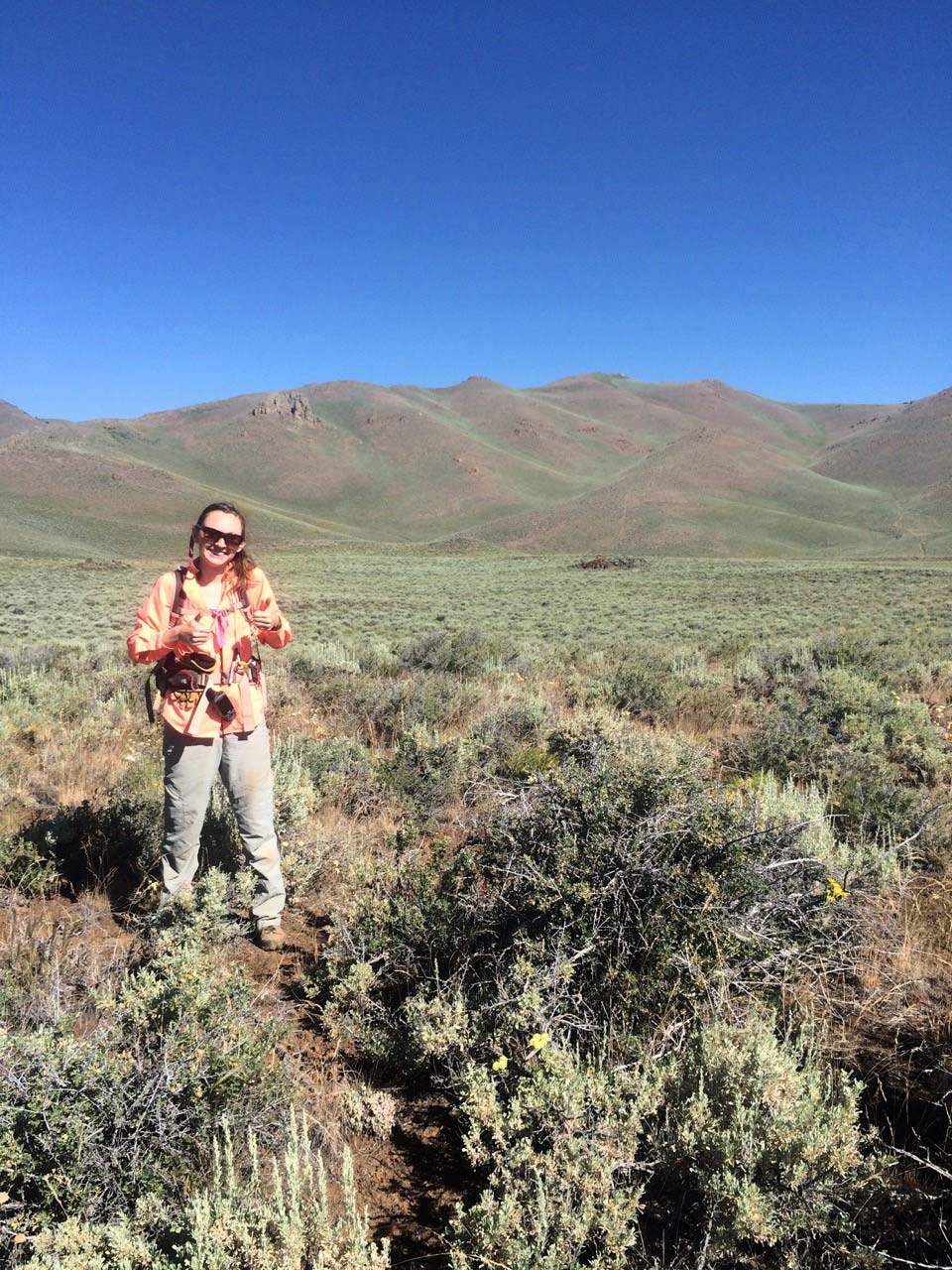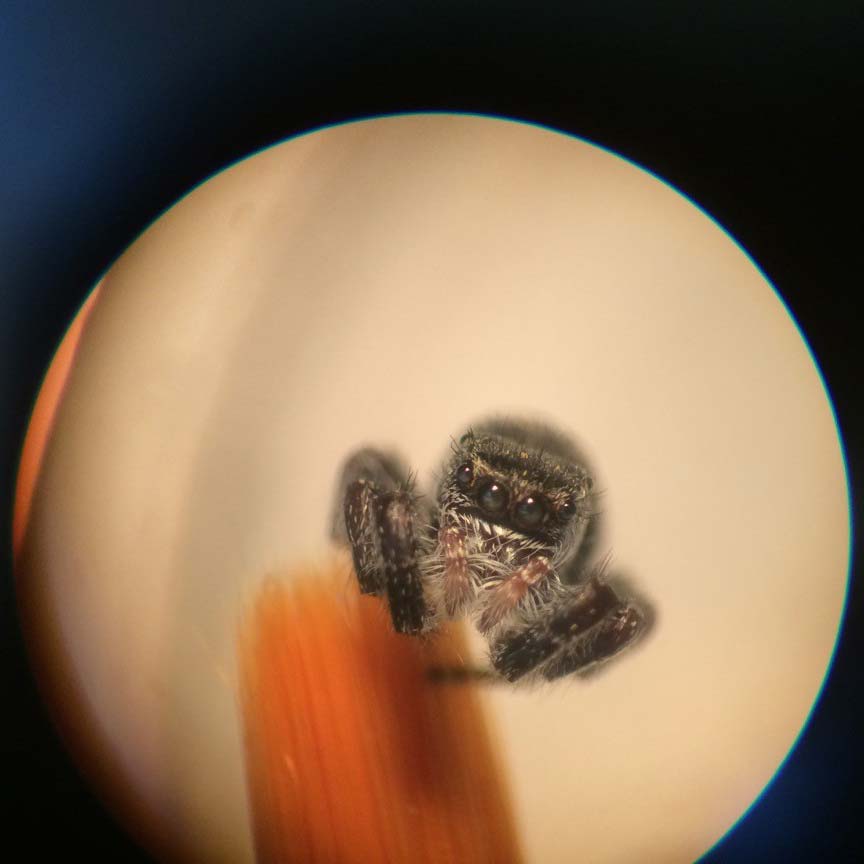Exploring Islands of Life at Craters of the Moon
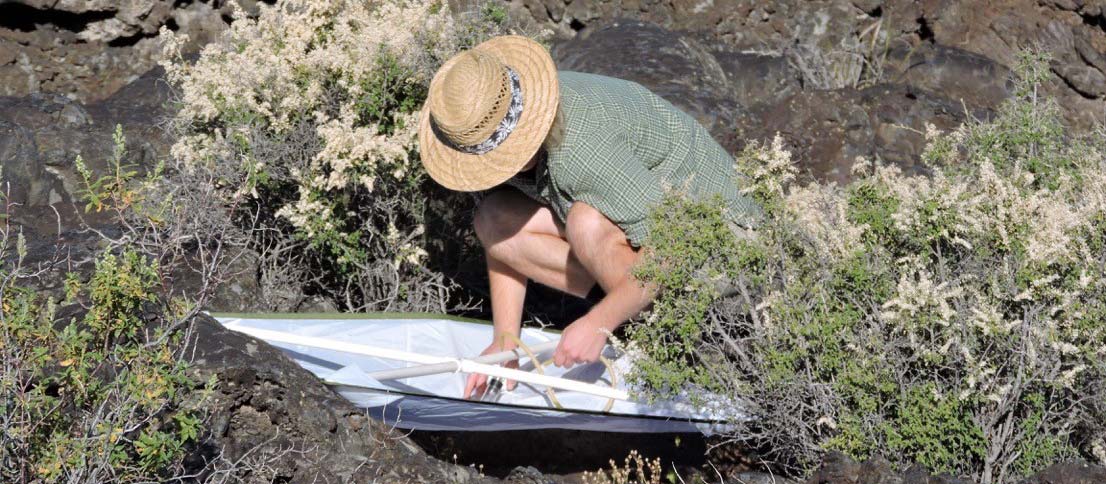
Peterson’s findings will contribute to major conversations in evolutionary biology about how communities evolve, especially when they’re separated from other communities. Isolation doesn’t just happen on islands and among lava flows. As human populations grow and urban areas expand, natural areas become fragmented, separating pockets of animals and plants that once lived in an uninterrupted habitat.
In addition to serving Peterson’s studies, the collections will help other researchers at the university. Her plant samples — gathered with techniques she learned in UI’s Advanced Field Botany course — will be incorporated into the UI’s Stillinger Herbarium.
She hopes that her spiders will become part of UI’s William F. Barr Entomology Museum. The museum’s namesake conducted extensive insect-gathering trips in Craters, and even wrote a book about the monument’s insect life, but the museum does not contain as many spider specimens.
Peterson also plans to use her research to enrich the National Park Service and general public’s knowledge of Craters of the Moon. She has a background in environmental education and a passion for outreach, so she plans to incorporate activities for the families who camp at Craters into her fieldwork next summer.
“I think it would be a great addition,” she says. “National Park Service staff are trying to survey the animals and plants at Craters of the Moon to get a better understanding of the community there, and my research will help with that process.”
Article by Tara Roberts, University Communications and Marketing
Katie Peterson is fascinated by the evolution of animal and plant communities on islands — but she chose to pursue her doctoral degree in biology at the University of Idaho, 300 miles inland.
Peterson, 27, found a unique place to study isolated, island-like populations, even in Idaho. Craters of the Moon National Monument and Preserve in south-central Idaho includes a 618-square-mile lava field, one of the state’s strangest landscapes.
Patches of life sprout in parts of Craters, separated by inhospitable lava flows. The monument is also home to more than 500 kipukas, where more recent lava flowed around slightly higher areas of older, vegetation-covered lava.
“It’s kind of like islands within islands within a continent,” Peterson says, who is originally from White Bear Lake, Minnesota.
Craters is an ideal area to study how geographical characteristics affect animal and plant life. The monument’s many lava flows vary from 2,000 to 15,000 years old, creating “islands” of different ages, sizes and degrees of isolation.
Peterson will present her initial findings at the 11th annual UI College of Science Student Research Expo from 2:30-5 p.m. Friday, Nov. 13, in the Teaching and Learning Center west-side lounge areas.
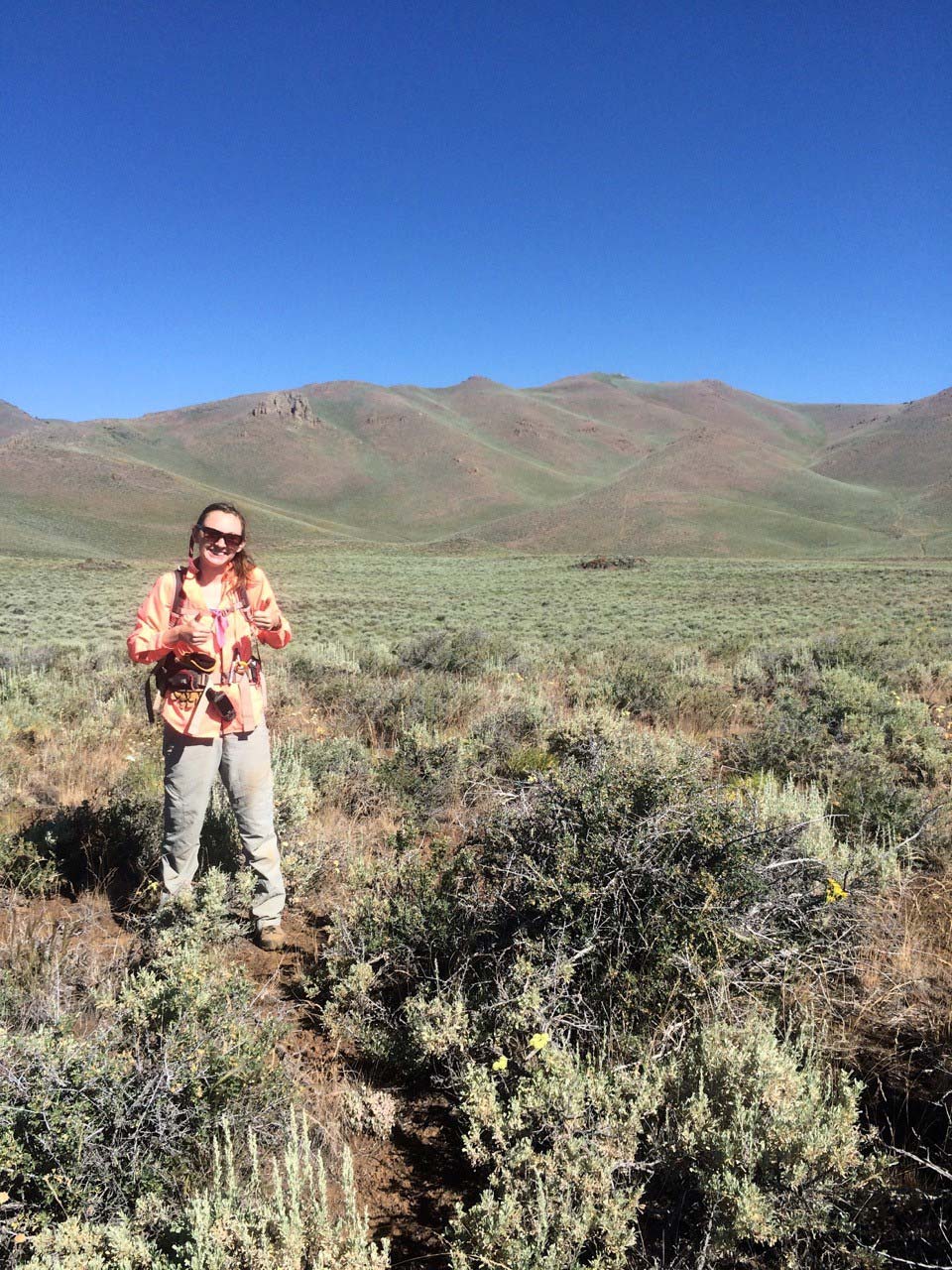
Peterson spent a week in Craters during summer 2015, getting to know the ecosystem and gathering samples. She’s looking in particular at two families of spiders: the Salticidae, or jumping spiders, which are active predators, and the Thomisidae, or crab spiders, which are camouflaged to lie in wait for their prey.
She chose spiders because they are among the creatures that colonize novel habitats early on and because they’re fairly easy to catch.
To collect specimens, Peterson and her summer assistants Austen Hilding and Reina Nielsen — two National Science Foundation-funded undergraduate students from her undergraduate alma mater, Gustavus Adolphus College in St. Peter, Minnesota — picked spiders off sagebrush and used kite-like frames called “beating sheets.”
“You set it under vegetation and you literally beat the vegetation or shake it, and insects, spiders and plant material fall out,” she says.
Peterson will return to Craters in summer 2016 to spend more time gathering samples that will allow her to analyze the effects of the monument’s geography on its spider and plant populations.
“I want to understand how communities assemble,” she says. “What makes a jumping spider more or less able to inhabit this barren, weird landscape?”
